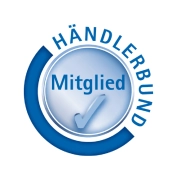Top Strategies for Maximizing Efficiency with Desktop CNC Mills in Modern Manufacturing
In the rapidly evolving landscape of modern manufacturing, efficiency has become a critical competitive edge for businesses. According to a report by the International Federation of Robotics, the adoption of CNC machining technology, including desktop CNC mills, has surged by over 20% in the past five years, indicating a strong trend toward automation and precision.

These compact yet powerful machines not only democratize manufacturing capabilities for small businesses and startups but also significantly enhance production speed and accuracy. As industries lean towards more sustainable practices and cost-effective solutions, mastering the use of desktop CNC mills can be pivotal. By leveraging cutting-edge techniques and workflows, manufacturers can maximize their output and reduce waste, aligning with the growing demands for efficiency and innovation.
Key Features to Look for in Modern Desktop CNC Mills
When selecting a modern desktop CNC mill, several key features can significantly enhance efficiency and productivity in manufacturing. First and foremost, precision is paramount. Look for machines equipped with high-resolution stepper or servo motors to ensure accurate milling results. Additionally, the ability to handle a variety of materials—from soft woods to tougher metals—expands the mill's versatility, making it suitable for various applications.

Another crucial feature is the user interface and software compatibility. Modern desktop CNC mills should come with intuitive software that allows for easy design and operation, enabling users to import designs seamlessly and adjust parameters with minimal hassle. Furthermore, automation features such as tool changing, probing systems, and built-in safety mechanisms can greatly streamline workflow, allowing for unattended operations and reducing the potential for human error. Investing in a desktop CNC mill that incorporates these advanced features will not only enhance efficiency but also facilitate growth in small-scale fabrication operations.
Essential Software Tools for Optimizing CNC Milling Efficiency
In the realm of modern manufacturing, maximizing the efficiency of CNC milling operations is paramount. One of the key components to achieving this is the strategic use of essential software tools. Software platforms can significantly streamline the design process, enhance machining operations, and improve overall productivity. For instance, advanced CAM (Computer-Aided Manufacturing) software allows operators to generate optimized toolpaths that reduce machining time and minimize tool wear. This not only leads to better surface finishes but also extends the lifespan of tools, resulting in cost savings.
Furthermore, integrating simulation software into the manufacturing workflow ensures that potential problems are identified and addressed before physical machining begins. By visualizing the machining process, manufacturers can fine-tune parameters such as feed rates, spindle speeds, and tool selection to achieve optimal cutting conditions. Additionally, utilizing energy consumption modeling tools can help in identifying ways to reduce energy usage during operations, aligning production practices with sustainability goals. With the right combination of software tools, manufacturers can enhance both the efficiency and precision of their CNC milling processes, paving the way for smarter and more effective manufacturing practices.
Top Strategies for Maximizing Efficiency with Desktop CNC Mills
Techniques for Enhancing Precision and Accuracy in Machining
In the realm of modern manufacturing, enhancing precision and accuracy in machining processes is paramount for achieving optimal productivity and product quality. According to a report by the National Institute of Standards and Technology (NIST), implementing advanced CNC milling techniques can lead to a reduction in machining errors by up to 30%. This significant improvement is made possible by leveraging features such as dynamic compensation, which adjusts tool paths in real-time based on sensor feedback, ensuring that each cut is executed with meticulous accuracy.
Furthermore, integrating high-quality tooling and materials plays a crucial role in precision machining. A study by the American Society of Mechanical Engineers (ASME) indicates that using carbide end mills can increase tool life by approximately 50%, resulting in more consistent machining outcomes. Coupled with optimized CNC programming strategies, such as adaptive machining, manufacturers can not only improve the precision of their operations but also substantially minimize waste, contributing to both cost savings and sustainability within the manufacturing process.
Best Practices for Workflow Integration in Desktop CNC Operations
Integrating desktop CNC mills into modern manufacturing processes requires an organized and strategic approach to maximize efficiency. One of the best practices is to streamline workflow by organizing workspaces and ensuring that CNC machines are positioned for optimal accessibility. By minimizing the distance between machines, materials, and tools, operators can significantly reduce setup times and efficiently manage various stages of production. Implementing a system for quick changeovers and clear labeling can further enhance operational flow, allowing teams to transition seamlessly between projects.
Another key strategy involves utilizing software solutions that promote collaboration and monitoring within manufacturing teams. By adopting integrated software platforms, operators can track production metrics, schedule maintenance, and communicate in real-time about project developments. This synchronization not only minimizes downtime but also fosters a culture of continuous improvement. Training team members on these tools is essential, ensuring everyone is equipped to leverage technology effectively, thereby increasing overall productivity in desktop CNC operations.
Top Strategies for Maximizing Efficiency with Desktop CNC Mills in Modern Manufacturing - Best Practices for Workflow Integration in Desktop CNC Operations
| Strategy | Description | Expected Outcomes | Implementation Tips |
|---|---|---|---|
| Optimized Tool Paths | Utilizing software to create efficient tool paths minimizes waste. | Reduced machining time and material usage. | Invest in CAM software that simulates tool paths. |
| Regular Maintenance | Scheduled maintenance helps to keep machines in optimal condition. | Increased machine lifespan and reliability. | Create a maintenance log and schedule regular checks. |
| Effective Training | Training operators ensures they understand machine capabilities. | Enhanced productivity and reduced error rates. | Implement hands-on training sessions and workshops. |
| Material Selection | Choosing the right material can affect machining speed and quality. | Improved quality of finished products and less rework. | Consult material datasheets for CNC machining properties. |
| Process Automation | Implementing automated processes to streamline production. | Increased throughput and reduced manual intervention. | Invest in CNC machines with automation features. |
Cost-Effectiveness: Investment vs. Output in CNC Milling Solutions
In today's competitive manufacturing landscape, the cost-effectiveness of CNC milling machines has become a central focus for businesses seeking to maximize their investment versus output. As industries increasingly turn to automation, the ability to efficiently produce high-quality components at lower costs keeps manufacturers ahead of the curve. The global CNC machine tools market is projected to grow significantly, with an estimated increase of USD 21.9 billion from 2025 to 2029, driven by rising demands for precision and multi-axis machining capabilities. This growth underscores the importance of selecting the right CNC solutions that strike a balance between upfront investment and long-term productivity gains.
The future of the milling machine market is bright, with a projected CAGR of 5.1%. Manufacturers are leaning towards advanced technologies like vertical and horizontal milling machines equipped with innovative features that enhance performance while reducing operational costs. Particularly in regions like Europe, where the machine tools market is expected to reach USD 47.75 billion by 2033, there is a growing emphasis on leveraging high-efficiency CNC solutions. As companies continue adopting these technologies, the converging trends of cost-saving and productivity enhancement are reshaping the manufacturing ecosystem, paving the way for more sustainable operations.

Related Posts
-
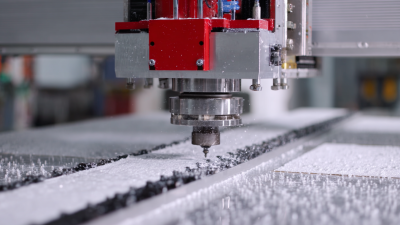
Versatile Applications of the Best Home CNC Machine in Diverse Industries
-
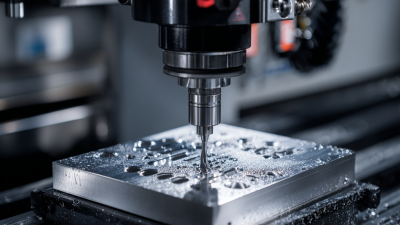
Navigating Global Trade Standards for Best Desktop CNC Machine Import and Export
-
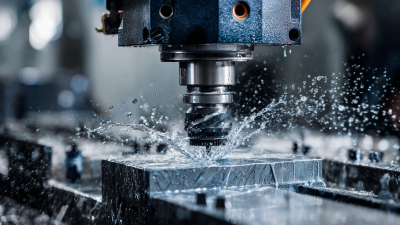
10 Best Industrial CNC Machines for Maximum Precision in 2023
-
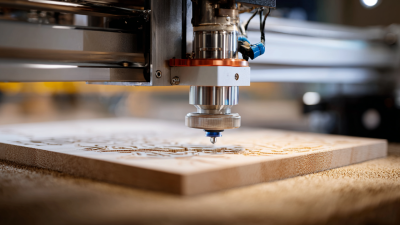
2025 Market Insights: How to Choose the Best CNC Engraver for Your Business Needs
-

Ultimate Checklist for Selecting the Best CNC Engraver for Your Business Needs
-

Navigating Import Export Certifications for Best CNC Metal Products with Practical How to Strategies
Siemensstraße 13-15
47608 Geldern
NRW Deutschland
Mail: sale@atmmachinesolutions.com
Head office:
+49 (0) 2831 91021-20
Fax:
+49 (0) 2831 91021-99
SUPPORT and INFO
from 3 p.m. to 6 p.m:
+49 (0) 2831 91021-60
( please ring for a long time )
Monday to Friday
8.00 – 12.30
and 13.00 – 15.00
Visit / collection by appointment only!
➣ Sign up for our newsletter
Benefit from a 20% discount, don’t miss any events and always stay up to date.
To access the actual content, click on the button below. Please note that data will be passed on to third-party providers.
More information